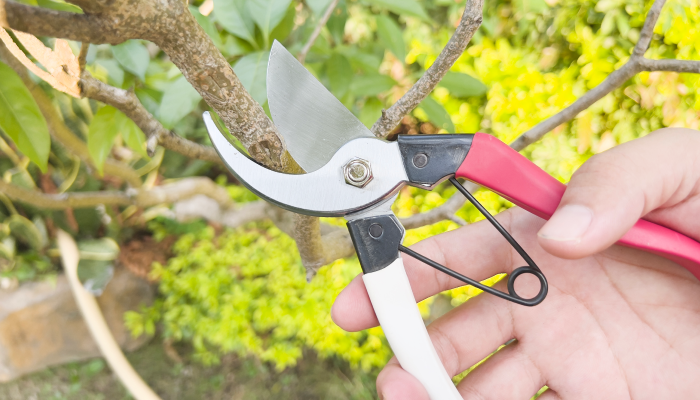
Things To Know When Buying Corona Pruning Shears
Pruning shears, often known as garden scissors or Corona pruning shears, are an essential part of every gardener's toolbox. With this gardening tool, you may cut, prune, and trim many kinds of plants. Some varieties allow you to prune in higher spots without a ladder since they have long handles. Let’s start with the common types of pruning shears.

Types For Pruning Shear
Garden shears come in three basic varieties, each with unique uses, blades, cutting actions, and characteristics.
- Anvil pruning shears: The ideal materials for anvil pruning shears are old or dry wood. The cutting-edge touches down on an anvil, a flat, broad surface. Greenwood shouldn't be cut with it because of how it cuts through a board like a knife does, crushing live material.
- Bypass pruning shears: Bypass pruning shears work best when used on green wood. Similar to a pair of scissors, it makes perfect cuts by gliding the blades past one another. Given that the blades are entirely cut through the stem, live plant material responds best to this precise incision.
- Ratchet pruning shears: Because of their ratcheting function, ratchet pruning shears are popular and perfect for persons with weak hands. Similar to anvil pruners or Corona pruning shears, most ratchet pruners contain one sharp blade and one flat blade. Because this multipurpose pruner cuts in phases, it is simpler to cut through thicker branches.
Blades' Quality and Tool sturdiness
The blades of a pruner are among its most crucial parts. For their pruners, many manufacturers use stainless, forged, or high-carbon steel blades. Each one has a different level of toughness, sharpness, and resistance. No matter how high-quality the blade is, it will probably stop working after a while. A straightforward sharpening can restore it to its optimal functionality when using high-quality blades. On the other hand, low-quality blades are susceptible to deformation over time. When this occurs, you won't be able to make precise, clean cuts and you might even hurt your plants.
The Durability of Corona Pruning Shears
When selecting hand pruners, the quality of the instrument is the most crucial factor to consider. Cheap, flimsy hand pruners may initially save you some money, but if they break after only a few uses, you'll end up paying twice. Invest in the toughest pruners you can. This gardening equipment may be pricey, but it will last you for many years. When shopping, look for hand pruners branded as "professional" or "heavy-duty pruning shears" Examine the product's overall quality more closely. The most durable material to utilize is high-tempered steel, so make sure it is used. If the hand pruner contains interchangeable parts to increase its lifespan, bonus points.
Cross-Cutting Capacity
What kind of plants you intend to prune will determine the best instrument to use. A pruner with a cutting capacity of at least 1 inch is ideal for the majority of activities while pruning branches. This tool can be used to prune smaller branches, fruit tree branches, perennial flower stems, long branches from shrubs, and other branches. The easiest technique to prune a bush or shrub with Corona pruning shears is to start by removing any dead or infected branches. Always prune a branch from the base rather than the middle or end. Next, remove any undesirable growths, such as excessively tall branches, fresh shoots emerging from the ground, and any branches protruding from the plant's main body. Last but not least, if your bush blooms, remove any dead flowers by pruning the bloom at its base.
Conclusion
Simply scrape off the plant matter with a steel brush or towel before wiping the blades down with a solution of one part water to one part bleach to clean and sterilize your shears. When not in use, always keep your pruning shears in a dry location to avoid rust and other damage.